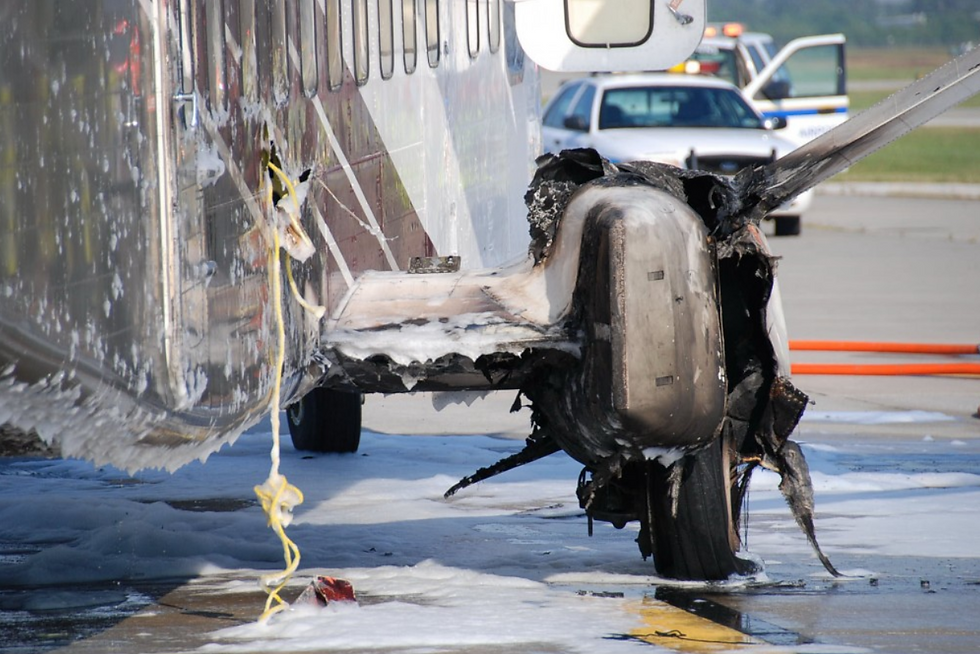A Shorts 360-100 was scheduled to operate a domestic cargo flight between Houston and Austin, both in Texas, USA. Onboard a crew of two. A check of the aircraft weights revealed the actual aircraft weight was 60 pounds over the maximum take-off weight. Sources on the internet give the following weight limitations for a Shorts 360;
Maximum Ramp Weight - 26553 lbs
Maximum Take-off Weight - 26453 lbs
Maximum Landing Weight - 26100 lbs
This puts the (estimated) ramp weight at 26513 lbs, which was 40 lbs below the Maximum Ramp Weight.

The aircraft directly after the fire was extinguished (©NTSB)
To bring the aircraft weight down before take-off the crew decided that they would use a higher than normal engine power setting during the long taxi to runway 8R and keep the speed under control by using the brakes. This way they would burn more fuel during taxi, and bring the weight within limits. After receiving their clearance the engines were started and the plan, as well as the aircraft, were put in motion. As the aircraft taxied the brakes were applied to keep the taxi speed within limits. However, after some time, the crew felt a yawing motion when one of the fusible plugs in the main wheel melted due to overheating, followed shortly afterwards by the other mainwheel fusible plug. (For description and purpose of a fusible plug, click here) An aircraft following the Shorts 360 informed the crew via VHF that they had a mainwheel fire on the right main landing gear. The crew immediately stopped the aircraft, carried out the necessary checklist and evacuated the aircraft. After the evacuation, the crew used two handheld fire extinguishers in an attempt to extinguish the fire.

The burned right wheel fairing (© NTSB)
Airport fire and rescue arrived on the scene after being alerted by ATC and extinguished the fire using firefighting foam. Damage to the aircraft was extensive. An investigation was launched by the NTSB and the operator submitted an NTSB Form 6120 (Pilot/Operator Aircraft Accident/Incident Report) which aided the NTSB in their investigation. The crew stated they were trained to not "ride the brakes" during taxi, and that they didn't realise what the consequences could be of their plan. The National Transportation Safety Board determined that the probable cause of the accident was;
"The pilot's improper decision to burn fuel during the taxi by operating the engines at a higher than normal power setting and using the wheel brakes to control taxi speed, which resulted in a wheel fire."
The NTSB report is available by clicking here. As the damaged area included the attachment for the wing strut to the fuselage the aircraft was declared as damaged beyond economical repair,

Close up of the damaged wheel fairing (©NTSB)

Comments